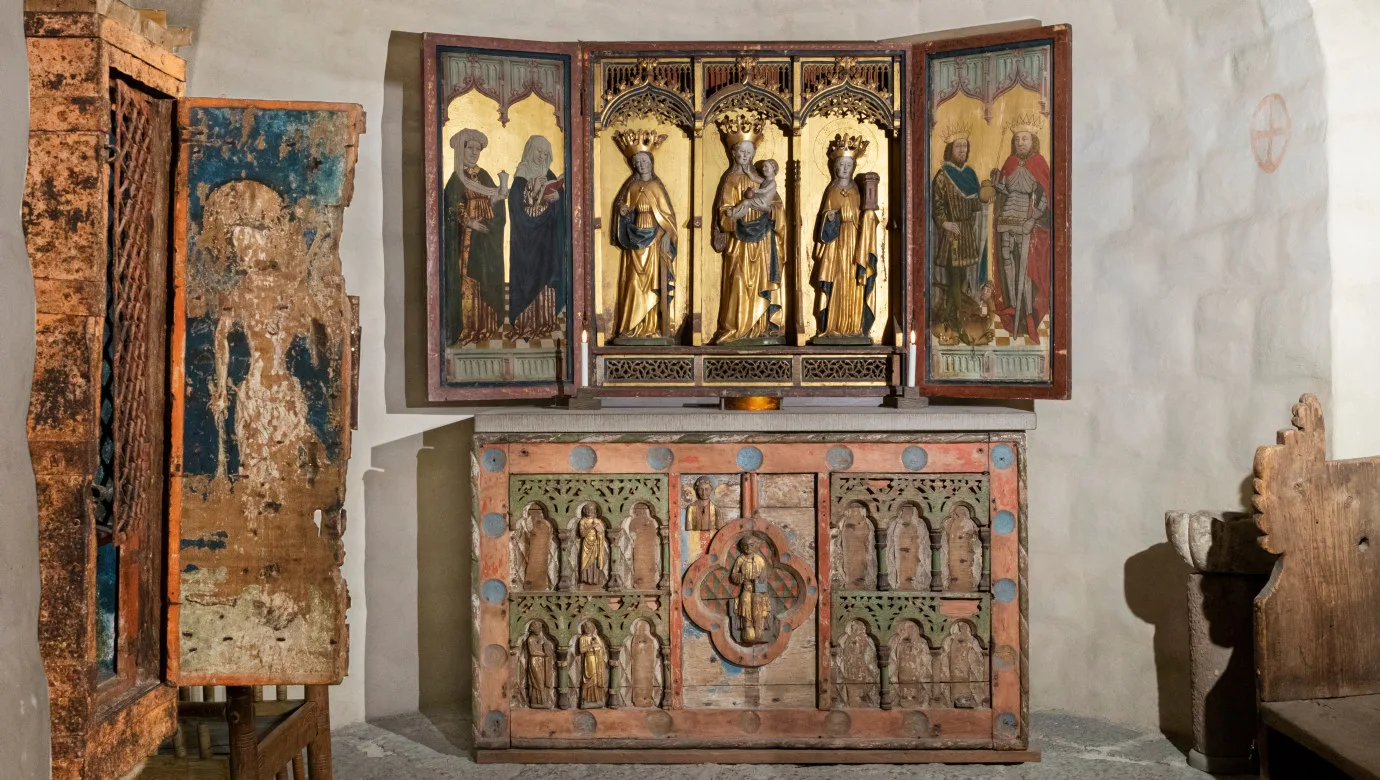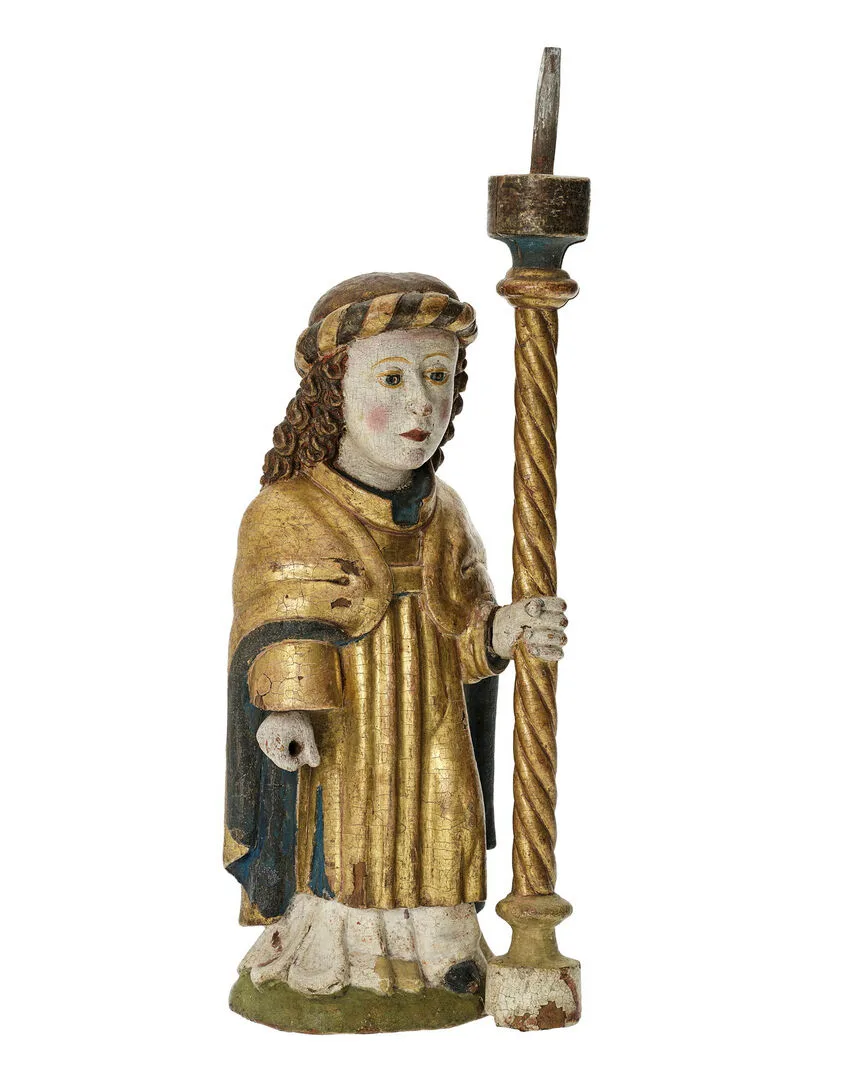Objects from Swedish churches
Viking Age
AD 800 – AD 1100
Middle Ages
AD 1050 – AD 1520
Modern Age
AD 1520 – AD 2025
Aquamanile
An aquamanile was one of many different types of liturgical vessels used during the medieval Mass. It was a water jug, often in the shape of an animal, used by the priest to wash his hands. In the church, aquamaniles were not considered sacred vessels and therefore did not need to be made of precious metals, unlike chalices, ciboria, and monstrances. These sacred vessels were required to be made of, or gilded with, precious metal since they came into direct contact with the host, or communion bread. According to the Roman Catholic doctrine of transubstantiation, the bread and wine are transformed into the body and blood of Christ.
Most surviving aquamaniles were made of bronze or brass. Their appearance could be highly imaginative; unicorns, mounted knights, bears, and griffins are known, but the most common form was the lion. The animal usually had an opening in its head, sometimes with a lid, for filling with water, and a spout in its mouth for pouring. The tail was typically shaped as an arch over the back to serve as a handle. Occasionally, smaller animals such as dragons or birds were placed on its back.
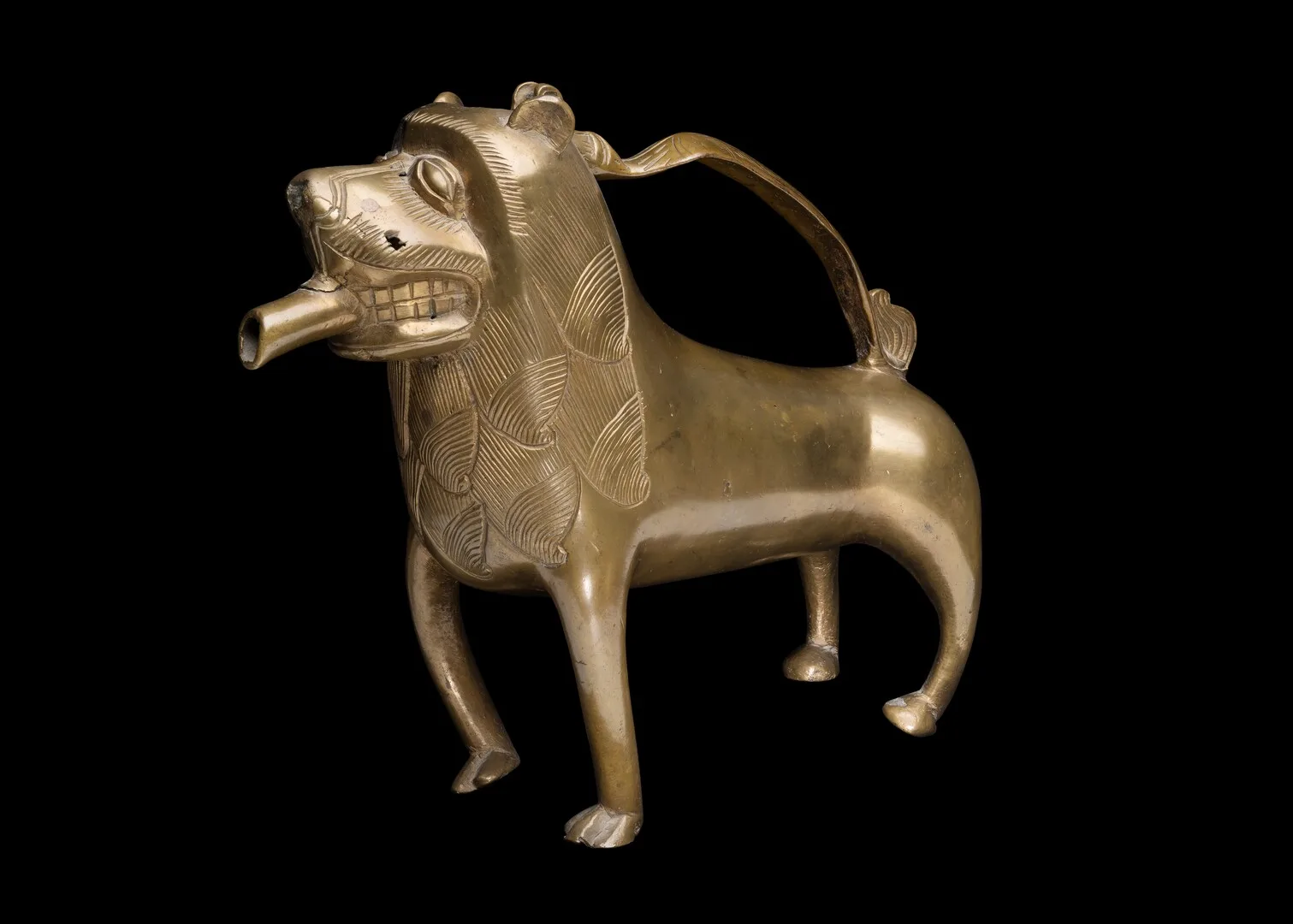
Aquamanile
From Germany
On view at Historiska museet in the exhibition Sveriges historia
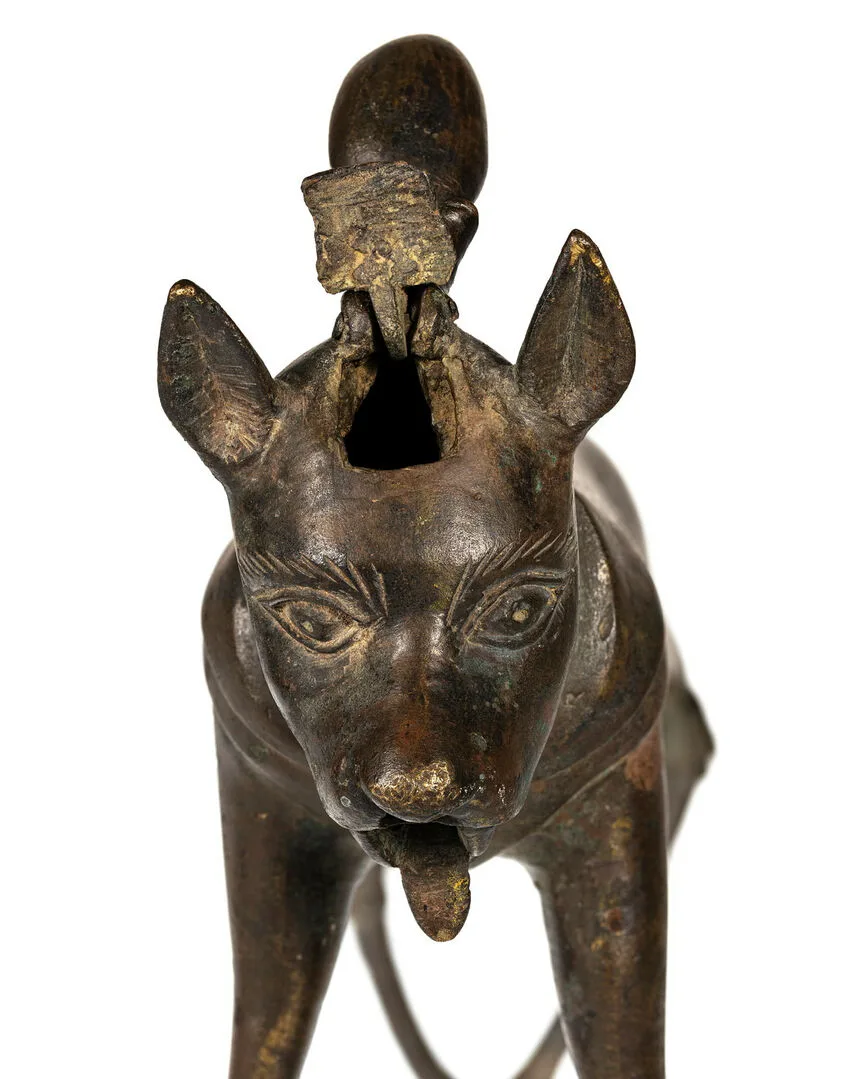
Aquamanile
Detail of the opening in the head.
On view at Historiska museet in the exhibition Medeltida liv
These animal-shaped jugs were not used exclusively in churches. They were also part of medieval aristocratic culture. During meals, servants carved and served the food, and proper etiquette required guests to wash their hands beforehand. The servant poured water over the guest’s hands into a basin, allowing them to rinse in running water before drying with a towel.
Lavatorium
A lavatorium was another vessel used for the same purpose. It was shaped like a hanging kettle with two spouts, sometimes designed as animal heads.
Chrismatory or oil vessel
Oil vessels were made of pewter, copper, or stone, often divided into three compartments for different types of holy oils used in various rites: church consecrations and blessings, baptism and confirmation, and anointing of the sick and dying.
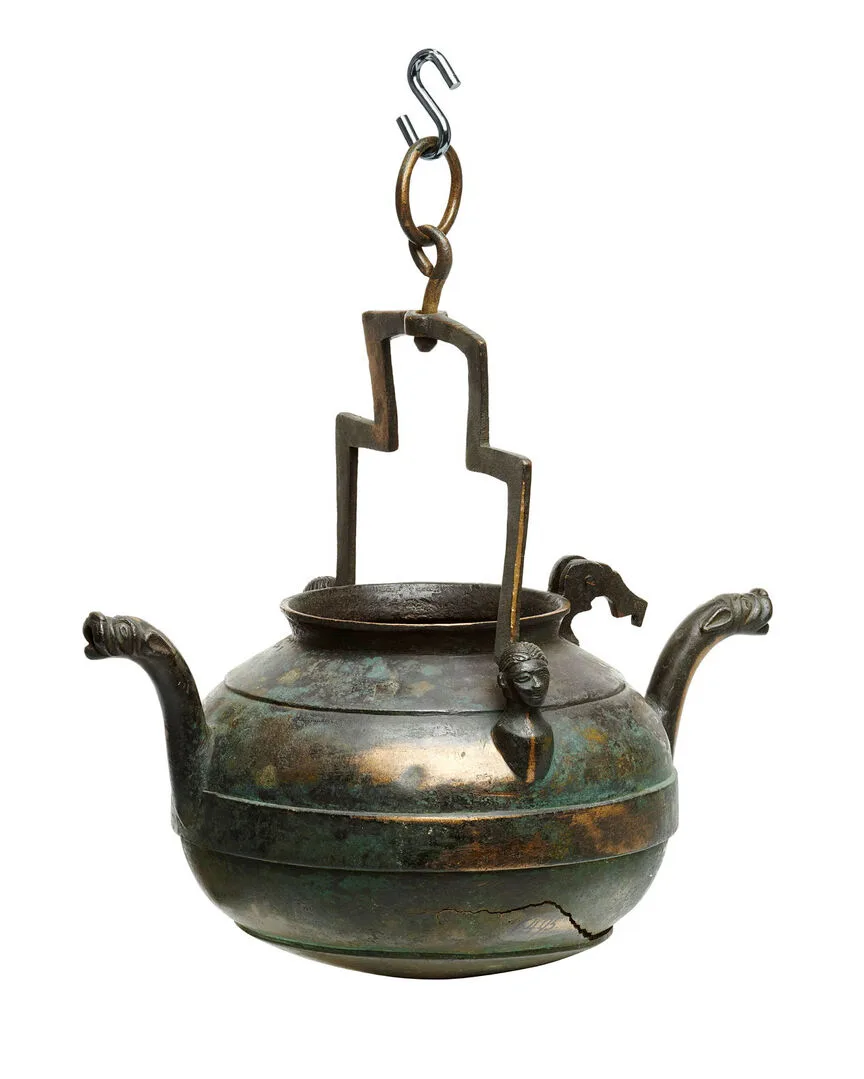
Lavatorium
From Stora Bjurum, Västergötland
Monstrance
A monstrance is a liturgical vessel in which the host, the consecrated communion bread, is displayed. Usually made of precious metal and richly decorated, monstrances were introduced in the late 13th century for displaying the host during sacramental processions. After the Reformation, monstrances lost their liturgical function and were often confiscated, which is why few medieval examples survive in Sweden.
This particular monstrance is made of gilded copper and originates from an unknown Swedish church. The small crescent that holds the host is supported by two angels, giving the impression that the host is floating. The host, a thin round wafer, symbolizes the body of Christ and is distributed during communion in remembrance of him.
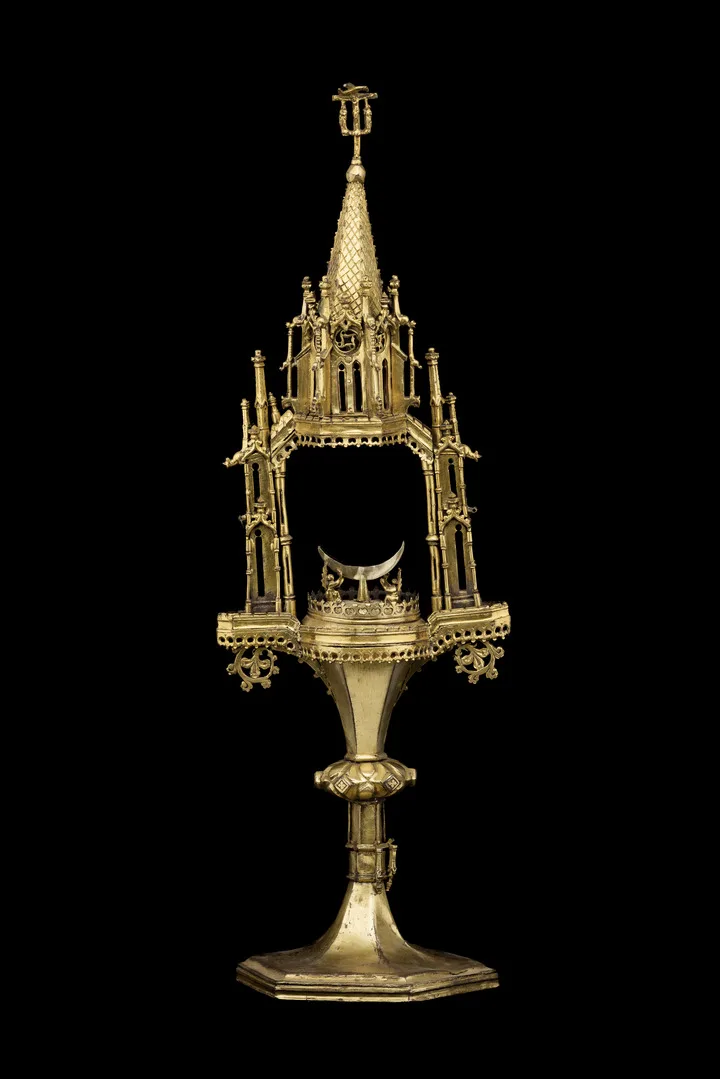
Monstrance
Richly decorated with many details.


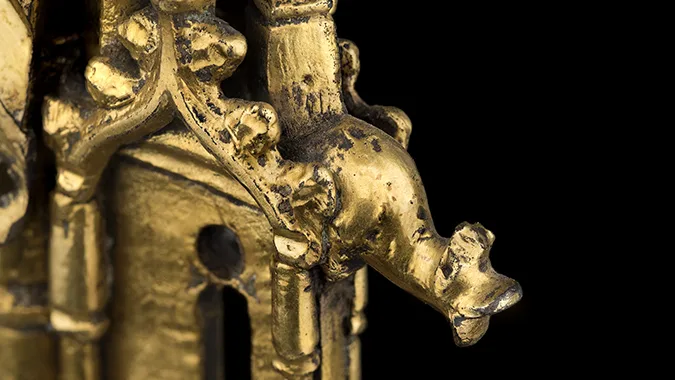
Photo: Ola Myrin, the Swedish History Museum/SHM (CC-BY 4.0).
Paten
A paten is a small plate used for the communion bread. This example, made of gilded silver in the 13th century, has a slightly recessed center. It forms part of the so-called Lindköping hoard.
The hoard also includes a chalice and four reliquaries from the 15th century, all made of silver. Two of the reliquaries are arm-shaped and are believed to have contained relics of Saint Bridget (Birgitta) and Saint Eskil. A third is shaped as a statuette of Saint Catherine of Alexandria. The hoard was discovered in 1676 in a field belonging to Linköping Cathedral. It is believed to have been buried during the confiscations ordered by King Gustav Vasa.
At the top of the chalice, Christ’s blessing hand is shown with the nail wound clearly visible.

Paten
From Linköping, Östergötland.
Censer
Censers were important during the Middle Ages in blessings and consecrations but also symbolized prayer itself. The incense, made from resin, was burned over glowing coals in the vessel’s base. The censer was swung to spread the fragrant smoke throughout the church.
Censers were usually made of bronze, though in cathedrals they could be crafted from precious metal. They consisted of a bowl for the incense and a perforated lid, often designed in architectural forms symbolizing the Heavenly Jerusalem. This bronze censer originates from Klövedal Church in Bohuslän, western Sweden.

Censer
From Klövedals kyrka, Bohuslän.
Relics and reliquaries
Relics are the remains of saints’ bodies or objects associated with them. They were often placed in reliquaries or relic shrines, which came in many forms and materials, from simple to luxurious. The shape was sometimes adapted to the relic itself, for example, an arm-shaped reliquary for an arm bone.
The collections of the Swedish History Museum include a fine example of a reliquary made from humble materials such as ceramics, as well as an unusually exotic one made from a coconut shell, originating from Vänge Church in Uppland.
A more elaborate example is the reliquary from Eriksberg Church in Västergötland, dating from the 12th century. Made of oak and covered with gilded copper, it is shaped like a miniature church, with dragon heads at each end. It is decorated with ornamental borders and figures of apostles and saints standing beneath round arches. Although the relics are no longer preserved, an inscription mentions Saints Vincent, Pancras, and Andrew. The reliquary is exceptionally well preserved and quite unique, as very few medieval Swedish reliquaries have survived.
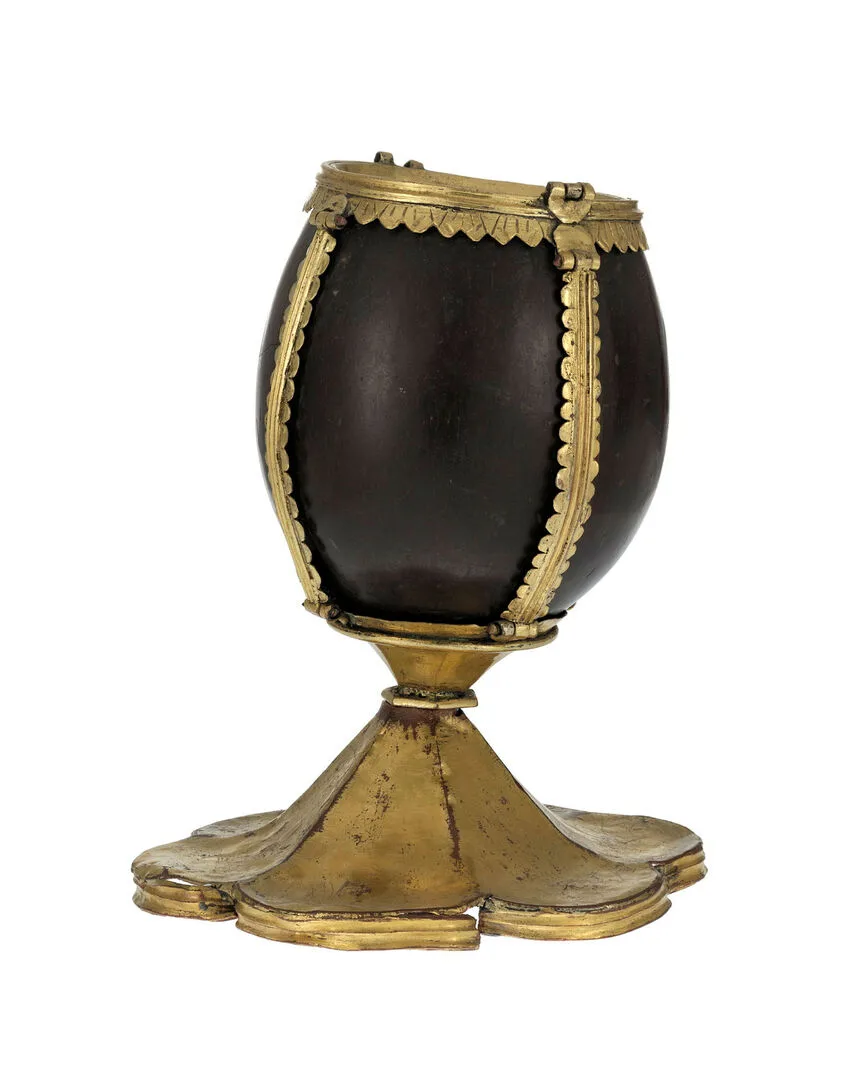
Reliquary made from a coconut
From Vänge kyrka, Uppland.

Reliquary shrine
From Eriksbergs kyrka in Västergötland
On view at Historiska museet in the exhibition Sveriges historia
